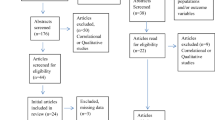Abstract
Objective
To study depression, anxiety and stress (DAS) among adolescent school students belonging to affluent families and the factors associated with high levels of DAS.
Methods
242 adolescent students belonging to class 9–12th selected for the study. DASS-21 questionnaire was used for assessing DAS.
Results
The scores in the three domains (DAS) were found to be remarkably correlated. It was seen that depression was significantly more among the females (mean rank 132.5) than the males (mean rank 113.2), p=0.03. Depression (p=0.025), Anxiety (0.005) and Stress (p<0.001) were all significantly higher among the ‘board classes’ i.e., 10th and 12th as compared to the classes 9th and 11th. All the three (DAS) were found to have an inverse relationship with the academic performance of the students. Depression and Stress were found to be significantly associated with the number of adverse events in the student’s life that occurred in last one year.
Conclusion
A significant proportion of the students were found to be having high levels of DAS and several important factors were found to be associated with them. Proactive steps at the school-level and community-level and steps for improved parent-adolescent communication are needed for amelioration of the problem.
Similar content being viewed by others
References
John T, Cherian A. Depressive disorders in the child and adolescent population [editorial]. Indian Pediatr 2001;38:1211–1216.
Vijaykumar L. Suicide and its prevention- the urgent need in India. Indian J Psychiatry 2007;49:81–84.
Student Mental Health Working Group. The mental health of students in higher education. Royal College of Psychiatrists; London, 2003.
World Health Organization. The world health report 2001 — mental health: new understanding, new hope. Geneva: The World Health Organization; 2001.
Lovibond SH, Lovibond PF. Manual for the Depression Anxiety Stress Scales 2nd ed Sydney: Psychology Foundation, 1995.
Lovibond SH, Lovibond PF. Depression Anxiety Stress Scale -21 (DASS-21). Available online at: www.psy.unsw.edu.au/dass. Last accessed: October 24, 2008.
Lovibond SH, Lovibond PF. Overview of the DASS and its uses. Available online at: www2.psy.unsw.edu.au/Groups/Dass/over.htm. Last accessed: February 15, 2009.
Bayram N, Bilgel N. The prevalence and socio-demographic correlations of depression, anxiety and stress among a group of university students. Soc Psychiatry Psychiatr Epidemiol 2008;43:667–672.
Vaidya PM, Mulgaonkar KP. Prevalence of depression anxiety & stress in undergraduate medical students & its co relation with their academic performance. Indian J Occu Therapy 2007;39:7–10.
Al-Gelban KS. Depression, anxiety and stress among Saudi adolescent school boys. J R Soc Health 2007;127:33–37.
Henry JD, Crawford JR. The short-form version of the Depression Anxiety Stress Scales (DASS-21): Construct validity and normative data in a large non-clinical sample. Br J Clin Psychol 2005;44:227–239.
Nieuwenhuijsen K, deBoer AGEM, Verbeek JHAM, Blonk RWB, vanDijk FJH. The Depression Anxiety Stress Scales (DASS): detecting anxiety disorder and depression in employees absent from work because of mental health problems. Occup Environ Med 2003;60:i77–i82.
Psychology Foundation of Australia. DASS publications. Available online at: www2.psy.unsw.edu.au/groups/dass/pub.htm. Last accessed: February 15, 2009.
Lowry R. Concepts and Applications of Inferential Statistics. Available online at: www.faculty.vassar.edu/lowry/ch14a.html. Last accessed 22 October, 2008.
Dawson B, Trapp RG. Basic and clinical biostatistics 4th ed. Lange Medical Books/McGraw Hill, 2004.
Andrews B, Wilding JM. The relation of depression and anxiety to life-stress and achievement in students. Br J Psychol 2004;95:509–521.
Shiels C, Gabbay M, Exley D. Psychological distress in students registered at a university-based general practice. Prim Care Community Psych 2008;13:9–18.
Saluja G, Iachan R, Scheidt PC, Overpeck MD, Sun W, Giedd JN. Prevalence of and risk factors for depressive symptoms among young adolescents. Arch Pediatr Adolesc Med 2004;158:760–765.
Author information
Authors and Affiliations
Corresponding author
Rights and permissions
About this article
Cite this article
Bhasin, S.K., Sharma, R. & Saini, N.K. Depression, anxiety and stress among adolescent students belonging to affluent families: A school-based study. Indian J Pediatr 77, 161–165 (2010). https://doi.org/10.1007/s12098-009-0260-5
Received:
Accepted:
Published:
Issue Date:
DOI: https://doi.org/10.1007/s12098-009-0260-5




